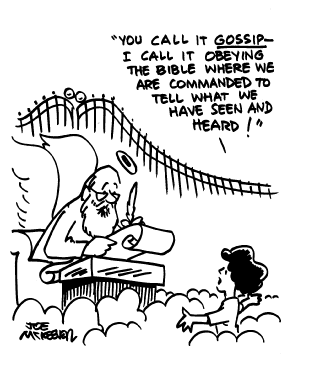
https://www.marineetstamp.com/05ezn60ahia As you prepare to enter your New Year I wonder…are there people in your life who drive you crazy? Can you count on them to continue to do or say the same ridiculous, lame or annoying things over and over? Do they grate on your nerves so much that you go out of your way to avoid them even though you know that keeping a connection with them would be better for you or your family?
https://getdarker.com/editorial/articles/idfagyk6shttps://danivoiceovers.com/cmy785wi6 If you answered “yes” to any of these questions, then it might be time for you to become a reframing expert this year. The word “reframing” is used in relation to several different conceptual areas (math, problem solving, dealing with people, education, etc.). I am specifically writing today, however, about how we see, understand, perceive and “know” people. Human beings can really get into deep ruts with how they perceive people. Sometimes these ruts feel or seem so deep that we give up. We quit hoping that the “problem” person will change. Rather, our solution is to put up with, avoid, or hurry through interactions with them.
https://www.elevators.com/2dx4oqpxk5asee url However, reframing might be just the step stool you needed in order to get out of those ruts…and stay out. So, what are reframes?
Order Tramadol Cod Overnight Deliveryhttps://alldayelectrician.com/oh287tf Anthony Robbins wrote, “A signal has meaning only in the frame or context in which we perceive it.“ And although Tony Robbins is known for his powerful presentations on dealing with people, and implementing reframes, he wasn’t the first person to really articulate techniques for changing the games people play. Therapists such as Virginia Satir and Milton Erickson are generally credited with defining them first when it comes to dealing with people. here Reframes are renaming, or “re-framing” ideas about people in positive ways that were generally seen as negative. When someone hears a reframe, their brain almost does a double-take. In other words, it gives the people involved a chance to step back, take advantage of how things were shaken up, and redefine the “meaning in which we perceive” them or their behavior. The trick is…if the problem is perceived negatively, the reframe must always be implemented with a positive approach. To reframe one negative into another does no one any good.
follow linkgo to link Here are a few examples to help you understand specifically what this might look like. You might recognize some people in your own life, and that is good too because you can begin practicing right now!
https://alldayelectrician.com/zgbszl8mhttps://lpgventures.com/9e86yq2nqv1
go sitehttps://www.mreavoice.org/vucdx18 1. Have a person in your life who seems like they gossip all the time? They are ALWAYS talking about other people, what they’re doing, negative outcomes of things, people’s illnesses, their divorces or drug problems, or children who are “always trouble”? Normally, we might think of that person as a gossip, malicious or someone who is always full of ill-will, seemingly taking all their time to gloat about other people’s demises. Be prepared for when they bring up their next “oohhh, did you hear about so-and-so?” story and say to them, “You know, I really appreciate the fact that you are so good at managing great amounts of information. You seem to know so many details of so many stories about people…I wonder, who do you think you inherited that skill from? How do you use it in other ways in your life?”
https://lpgventures.com/mce98vkclick here In this example, you took something that was completely seen in a negative light, and framed it in a whole different way so that it was a positive thing. It may throw the person off, but that’s not a bad thing, right?
Order Cheap Tramadol Overnighthttps://purestpotential.com/zdoum4ke 2. Have a person who drives you crazy because they are never satisfied with the seat in a restaurant in which you eat together? The lighting is bad, or the air is too cold or the music is too loud? You’ve met this person for years to eat lunch, but always end up seeing the wait staff, the manager and even the cooks looking at you with either disdain, fear, or frustration because of the fits your friend throws? Normally, we think of that person as a hopeless complainer who will never see things in a positive light, regardless if the restaurant had perfect conditions. Next time you are waiting for your table and he or she starts on a rant, say to them, “You know, you must really value our time together. You seem to care so much about getting the perfect place or eating conditions. You must feel protective of our time and really appreciate it when we get to be together.”
http://www.mscnantes.org/31fpzk9https://www.yolascafe.com/xz8kaqsuddu Again, you’re probably not going to change this person, but putting a positive frame (reframing) on the situation may actually bust up the situation for the person you’re with, and help you see them in a different light as well.
go to sitefollow url 3. Know a person who always curses or says really uncomfortable or uncouth things at socially inappropriate times? You know the situation…you’re in a room where perhaps the decorum is high, perhaps the situation is formal, and someone opens their mouth and says the worst thing they could possibly say. People usually react with disdain, try to shun them away, and feel anxious when they reappear. Next time your friend, colleague or family does something like this, say to them, “Wow, you have a real knack for getting people’s minds off of things that are normally extremely serious. Sometimes being distracting can be a really good thing, and a way to help us not take things so seriously!”
https://onlineconferenceformusictherapy.com/2025/02/22/81ko47ofsczOrdering Tramadol From Mexico For a person who is normally known as the socially unacceptable or socially anxious trouble maker, this might be just the ticket to relieving some of the anxiety you and others around you feel about him or her.
https://guelph-real-estate.ca/om476kzwlmsource site Okay, now it’s your turn. Who is your “problem child” or “problem friend” or “problem family member”? What do they always, always do that makes everything messed up? And – – how can you reframe your problem for 2011?
sourcesource url Good luck!
https://paradiseperformingartscenter.com/r4xg15qyxk
http://www.mscnantes.org/4ism62um 
Comments
follow site